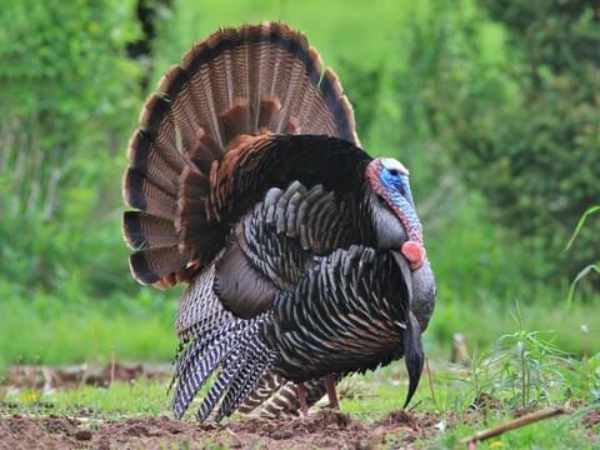Nestled within the picturesque expanse of Pennsylvania, the Poconos Mountains stand as a haven for nature enthusiasts and wildlife aficionados. Beyond its breathtaking landscapes and outdoor adventures, the Poconos are home to a rich tapestry of diverse and captivating fauna. From elusive mammals to vibrant birds and a wealth of aquatic life, this region boasts an array of unique wildlife thriving in its lush forests, pristine lakes, and flowing rivers.
In this article, we embark on a journey to uncover the hidden gems of the Poconos’ animal kingdom, exploring their habitats, behaviors, and the role they play in shaping this remarkable ecological wonder. Join us as we delve into the captivating world of Poconos animals, celebrating the beauty of biodiversity and embracing the natural wonders that make this mountainous region a true wildlife paradise.
Table of Contents
Geography and Habitat of the Pocono Mountains:
The Pocono Mountains, situated in northeastern Pennsylvania, encompass an area renowned for its stunning natural beauty and diverse landscapes. Characterized by rolling hills, dense forests, cascading waterfalls, and an abundance of lakes and rivers, the region provides a rich tapestry of habitats for a wide variety of wildlife. The Poconos is a transitional zone where northern hardwood forests converge with the southern hardwood forests, creating a unique blend of flora and fauna.
This diversity is further enriched by the presence of wetlands, grasslands, and montane ecosystems. The habitat mosaic supports a myriad of species, including white-tailed deer, black bears, coyotes, various bird species, and aquatic life in the pristine water bodies. Understanding this diverse geography is fundamental to appreciating the ecological significance and allure of the Pocono Mountains.
1. White-Tailed Deer (Odocoileus virginianus):
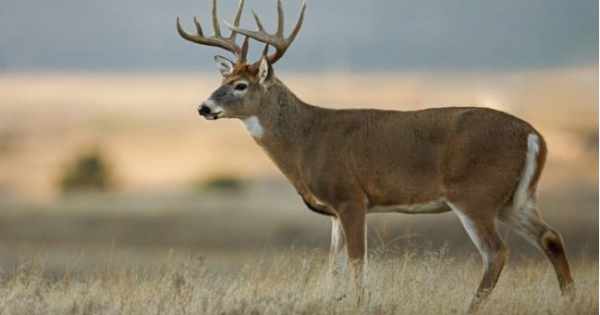
The white-tailed deer, a magnificent and iconic mammal of the Pocono Mountains, is a symbol of the region’s natural beauty. These elegant creatures are abundant, gracing the forests, meadows, and riverbanks of the Poconos. Their namesake white tail, which is raised in alarm, adds to their allure. White-tailed deer are herbivores, feasting on a varied diet of plants, leaves, fruits, and acorns.
During mating season or rut, the forests come alive with their distinctive calls and displays of strength and agility. While they are a cherished part of the Poconos’ wildlife, they can also present challenges, particularly with vehicle collisions, making conservation efforts vital to ensuring a harmonious coexistence.
2. Black Bear (Ursus americanus):
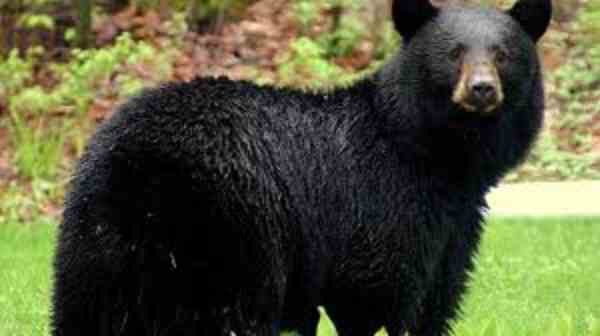
The black bear, a symbol of strength and wilderness, calls the Poconos home. These awe-inspiring creatures, with their thick black fur and sometimes a white V-shaped patch on their chest, are the largest land mammals in the region. While they often evoke a sense of wildness, they are typically elusive and shy. Black bears are opportunistic feeders, consuming a diverse diet of berries, nuts, insects, and occasionally small mammals.
During late fall, they prepare for winter by entering a state of hibernation, a remarkable survival strategy. However, human-bear conflicts can arise, emphasizing the importance of responsible trash management and respectful distance. Education and conservation efforts play a crucial role in maintaining a balance between human activities and the presence of these magnificent creatures.
3. Eastern Coyote (Canis latrans):

The Eastern coyote, a highly adaptable and versatile predator, roams the Pocono Mountains. A blend of coyote, wolf, and dog genetics, these canids have thrived in various habitats, including the forests, farmlands, and even suburban areas of the Poconos. With their keen senses and adaptability, they play a vital role in the ecosystem by helping control prey populations.
Eastern coyotes primarily hunt small mammals, birds, and occasionally deer. Their distinct yips and howls are a common sound in the Poconos, especially during their breeding season. While their presence enriches the region’s wildlife, proper coexistence strategies, such as secure livestock enclosures and responsible pet ownership, are necessary to mitigate potential conflicts.
4. Bobcat (Lynx rufus):
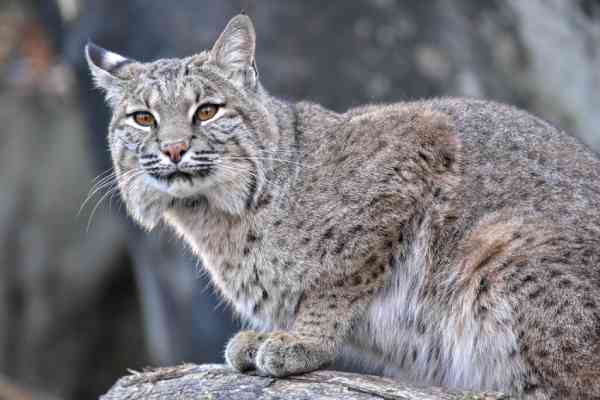
The elusive and enigmatic bobcat, with its tufted ears and distinctive spotted coat, is a fascinating inhabitant of the Pocono Mountains. These stealthy felines, known for their solitary nature and exceptional hunting skills, roam the dense forests of the region. Their diet primarily consists of small mammals like rabbits and squirrels, showcasing their vital role in controlling prey populations.
Although sightings are rare due to their secretive behavior, their presence underscores the health and biodiversity of the Poconos’ ecosystems. Conservation efforts aimed at preserving their habitats are essential for ensuring the continued existence and well-being of these elusive wildcats in the Pocono Mountains.
5. Eastern Gray Squirrel (Sciurus carolinensis):
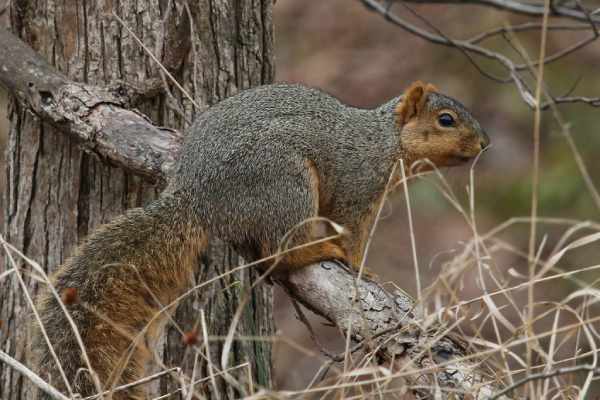
The Eastern gray squirrel, a ubiquitous and charming rodent, is a common sight in the Pocono Mountains. Recognized by their gray fur and bushy tails, these agile climbers are essential seed dispersers in the region’s forests. Their diet comprises nuts, seeds, berries, and occasional insects, showcasing their adaptability.
Eastern gray squirrels play a crucial role in shaping forest regeneration, as they hoard and scatter seeds, contributing to plant growth. While some view them as pests due to their fondness for bird feeders and gardens, they remain an integral part of the Poconos’ wildlife, reminding us of the interconnectedness of all living beings in this diverse ecosystem.
6. Wild Turkey (Meleagris gallopavo):

The wild turkey, an iconic and impressive bird, roams the woods and meadows of the Poconos. These large, game birds are known for their distinctive fan-like tails and wattled necks. Wild turkeys are highly adaptable, foraging for acorns, seeds, berries, and insects.
Their distinctive gobbling calls echo through the forests, particularly during mating season. While they were once threatened by overhunting and habitat loss, conservation efforts have helped their populations recover, and they now contribute to the natural beauty and cultural heritage of the Pocono Mountains.
7. Raccoon (Procyon lotor):
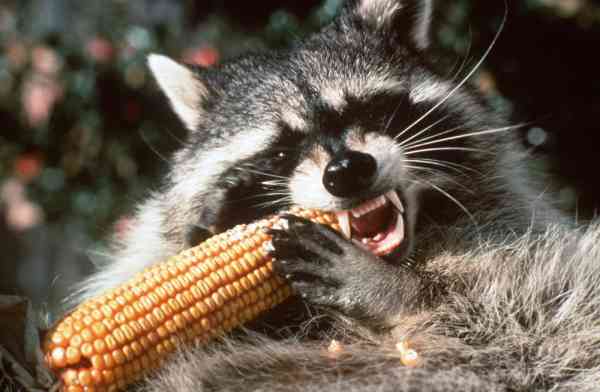
The raccoon, with its endearing masked face and ringed tail, is a familiar and adaptable creature found in the Pocono Mountains. Known for their intelligence and dexterity, raccoons thrive in various habitats, including forests, wetlands, and urban areas. Their omnivorous diet includes berries, insects, small mammals, and human food scraps. Raccoons are famous for their ability to open containers and solve problems, showcasing their resourcefulness.
While they may sometimes be considered nuisances due to their raids on trash cans, they play a role in the ecosystem by controlling insect and small mammal populations. Understanding their behavior and employing responsible waste management practices can help maintain a harmonious relationship with these charismatic nocturnal foragers.
8. Red Fox (Vulpes vulpes):
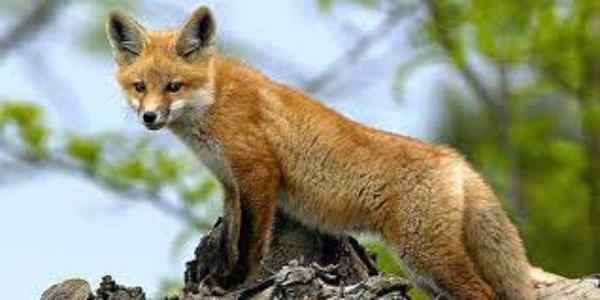
The red fox, with its fiery red fur and bushy tail, is an enchanting predator found in the Pocono Mountains. These adaptable canids are skilled hunters, preying on small mammals, birds, and insects. Their adaptability is evident in their ability to thrive in diverse habitats, from forests to suburban areas.
Red foxes play a vital role in controlling pest populations and contribute to the region’s ecological balance. Their presence is a testament to the resilience and beauty of the Pocono Mountains’ wildlife, encouraging conservation efforts to ensure their continued existence in this biodiverse region.
9. Eastern Chipmunk (Tamias striatus):
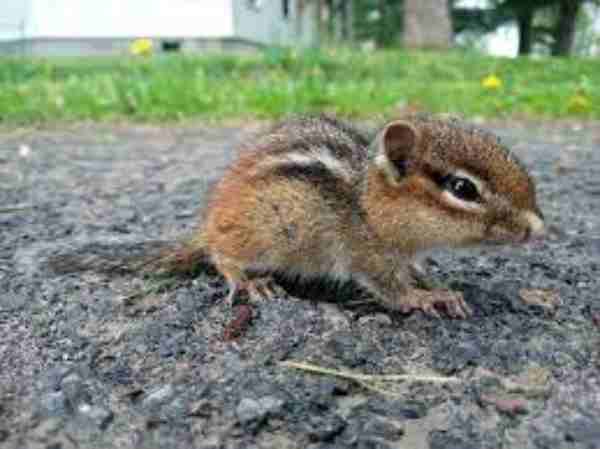
The Eastern chipmunk, a small and charismatic ground-dwelling rodent, is a delightful resident of the Pocono Mountains. Recognizable by their distinctive stripes and cheek pouches, they scurry through the forest floor in search of seeds, nuts, berries, and insects.
Chipmunks play a vital role in the ecosystem by aiding in seed dispersal and contributing to forest regeneration. Their energetic behavior and adorable appearance make them a favorite among wildlife enthusiasts, adding to the charm of the Pocono Mountains’ biodiversity.
10. Great Horned Owl (Bubo virginianus):
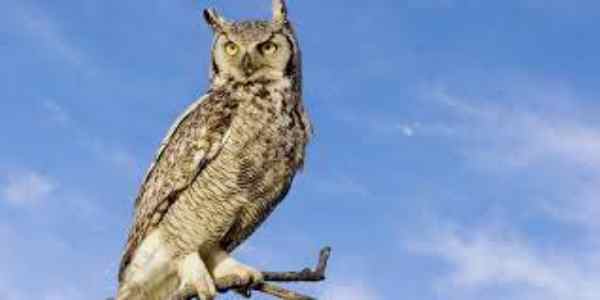
The great horned owl, a magnificent and powerful nocturnal bird of prey, graces the skies of the Pocono Mountains. Recognized by their tufted “horns,” these apex predators possess keen vision and strong talons, enabling them to capture a variety of prey, including rodents, birds, and even larger mammals.
Their distinctive hooting calls echo through the forests, marking their territory and courtship. As an important part of the region’s ecosystem, great horned owls help control rodent populations, highlighting their essential role in maintaining the ecological balance of the Pocono Mountains.
Conservation and Environmental Challenges:
Conservation efforts in the Poconos are crucial to preserving its delicate ecosystems and safeguarding the flora and fauna that call this region home. Environmental challenges, such as habitat fragmentation due to urbanization, pollution from tourism, invasive species, and climate change impacts, pose significant threats to the region’s biodiversity.
Balancing economic development with sustainable environmental practices is an ongoing challenge. Conservation organizations and local initiatives strive to address these challenges through habitat restoration, responsible tourism, public education, and policy advocacy to ensure the long-term health and sustainability of the Pocono Mountains’ natural beauty and wildlife.
Ecotourism and Wildlife Observation in the Poconos:
The Pocono Mountains offer an ideal setting for ecotourism and wildlife observation, attracting visitors eager to experience the wonders of nature. Ecotourism initiatives promote responsible and sustainable tourism, allowing visitors to appreciate the region’s biodiversity while minimizing their environmental impact. Guided wildlife tours, birdwatching excursions, and educational programs provide opportunities to witness the diverse fauna of the Poconos.
Encountering white-tailed deer grazing in meadows or observing eagles soaring overhead against the backdrop of lush forests adds a magical dimension to the visitor’s experience. Ecotourism not only supports local conservation efforts but also fosters a deeper understanding and appreciation for the precious natural heritage of the Pocono Mountains.
Final Words:
The Pocono Mountains stand as a testament to the beauty and resilience of nature. As we navigate the delicate balance between human activity and environmental preservation, let us embrace the responsibility to protect this pristine wilderness.
Conservation endeavors, sustainable practices, and a reverence for the natural world are fundamental to ensuring that future generations can continue to be captivated by the enchanting landscapes and diverse wildlife of the Poconos. Let us collectively commit to being stewards of this ecological haven, cherishing and preserving its splendor for generations to come.
Reference:
- https://traveltips.usatoday.com/wildlife-poconos-109485.html
- https://www.poconomountains.com/things-to-do/outdoors-adventure/wildlife-viewing/
- https://www.pvbears.org/cms/lib04/PA01001117/Centricity/Domain/438/Pocono%20mammal%20guide.pdf

Rahul M Suresh
Visiting the Zoo can be an exciting and educational experience for all involved. As a guide, I have the privilege of helping students and visitors alike to appreciate these animals in their natural habitat as well as introducing them to the various aspects of zoo life. I provide detailed information about the individual animals and their habitats, giving visitors an opportunity to understand each one more fully and appreciate them in a more intimate way.

